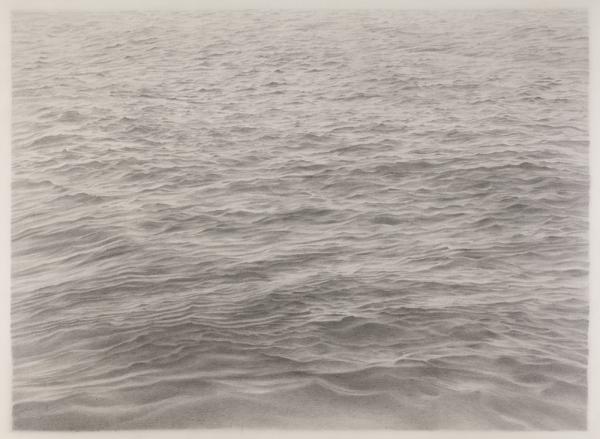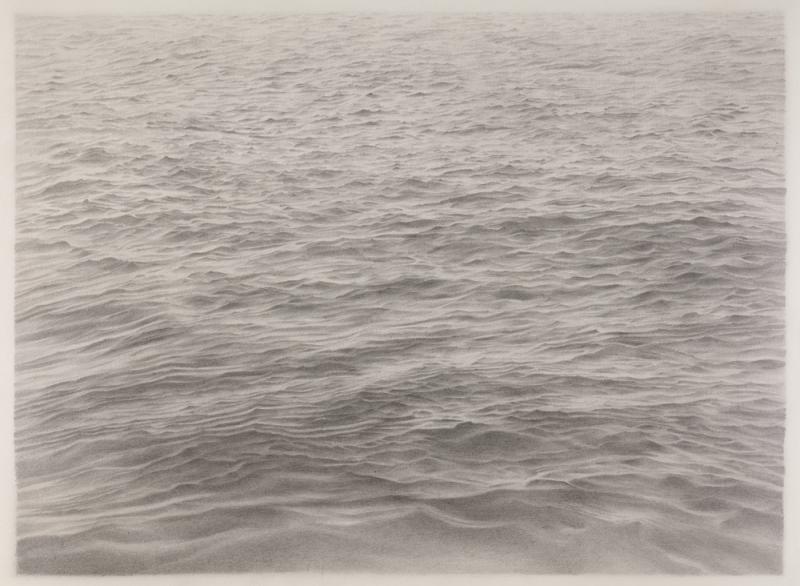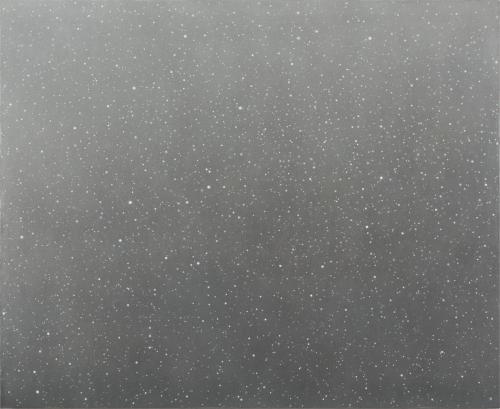Skip to main content
Untitled (Ocean)
Artist
Vija Celmins
(American, born 1938)
Date1970
MediumPencil and acrylic on paper
DimensionsUnframed: 12 3/4 × 17 1/2 in. (32.39 × 44.45 cm)
Framed: 17 1/8 × 21 7/8 × 1 1/2 in. (43.5 × 55.56 × 3.81 cm)
Framed: 17 1/8 × 21 7/8 × 1 1/2 in. (43.5 × 55.56 × 3.81 cm)
Credit LineCollection of the Modern Art Museum of Fort Worth, Museum purchase, The Benjamin J. Tillar Memorial Trust
Object number1972.40
Status
Not on viewSigned"Vija Celmins LA 1971, Last Drawing" on back side of sheet
Copyright© Vija Celmins. Courtesy Matthew Marks Gallery.
Category
Label TextVija Celmins’s small-scale, mostly monochrome images have made a quiet but formidable contribution to American art since the 1960s. She is known for her meticulous paintings, drawings, and prints of objects and boundless environments such as starry skies, ocean surfaces, and desert floor. Working from photographs, taken herself or appropriated from other publications, the artist laboriously transposes one surface to another, photographic image to drawn or painted one—a process she terms “re-description.” The resulting works, three key examples of which are in the collection of the Modern, transcend their sources to possess a perceptual reality all their own.
In 1966, living in California and absorbing the “Cool LA” scene known as West Coast Pop, Celmins began a series of grisaille paintings of violent and political imagery—World War II–era fighter planes, a revolver, car accidents, and explosions at sea—based on journalistic photographs culled from books and magazines. The Modern’s German Plane, 1966, is an important early example from these works.
Untitled (Ocean), 1970, is from a series of drawings based on photographs Celmins took of the ocean while standing on a pier in the Venice area of Los Angeles. With methodically applied graphite marks, the artist gradually transformed her white paper into a highly representational depiction. Gentle waves span the entire surface of the sheet, diminishing in size from the bottom edge of the drawing to the top and lending a sense of receding space. But the field of waves and crests also registers as a unified surface pattern, emphasizing the true flatness of the paper. To the viewer’s eye, the drawing continually oscillates between levels of perception—illusion and surface, image and material—and an alternating sensation of vastness and control.
In 1966, living in California and absorbing the “Cool LA” scene known as West Coast Pop, Celmins began a series of grisaille paintings of violent and political imagery—World War II–era fighter planes, a revolver, car accidents, and explosions at sea—based on journalistic photographs culled from books and magazines. The Modern’s German Plane, 1966, is an important early example from these works.
Untitled (Ocean), 1970, is from a series of drawings based on photographs Celmins took of the ocean while standing on a pier in the Venice area of Los Angeles. With methodically applied graphite marks, the artist gradually transformed her white paper into a highly representational depiction. Gentle waves span the entire surface of the sheet, diminishing in size from the bottom edge of the drawing to the top and lending a sense of receding space. But the field of waves and crests also registers as a unified surface pattern, emphasizing the true flatness of the paper. To the viewer’s eye, the drawing continually oscillates between levels of perception—illusion and surface, image and material—and an alternating sensation of vastness and control.







